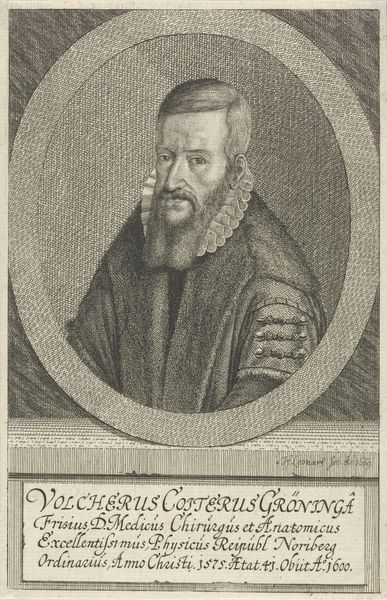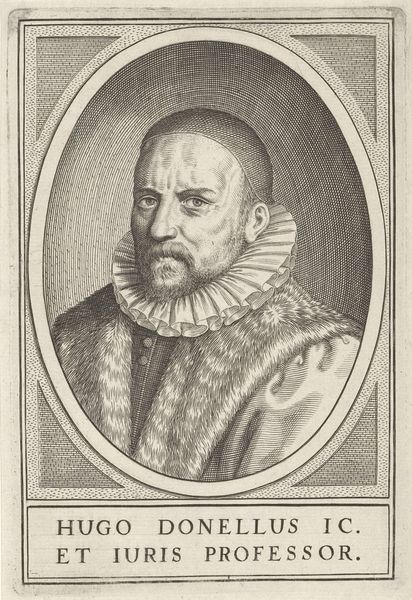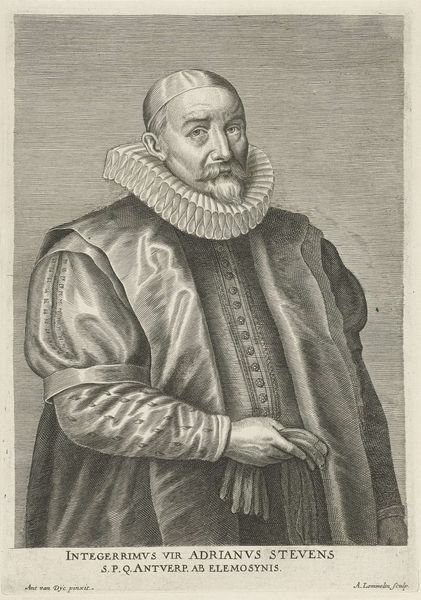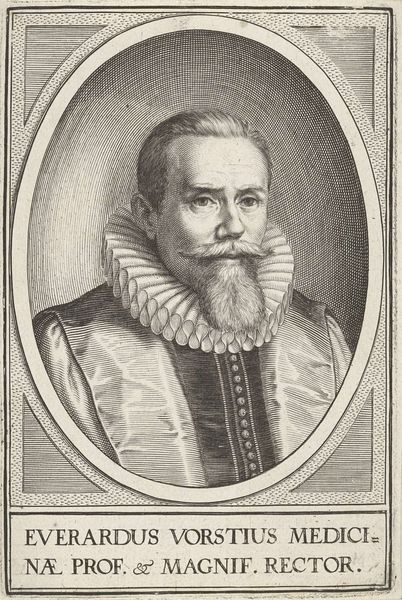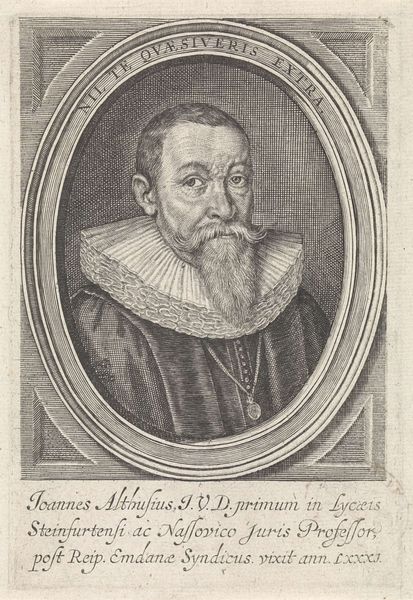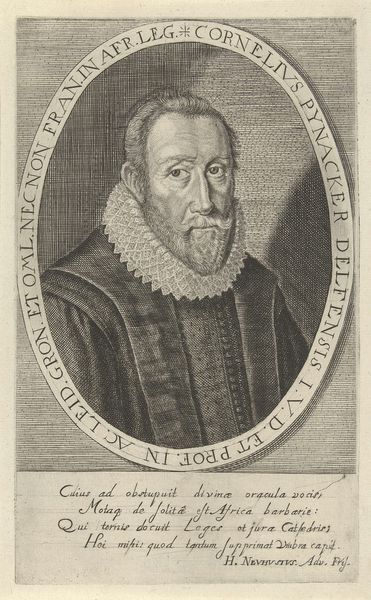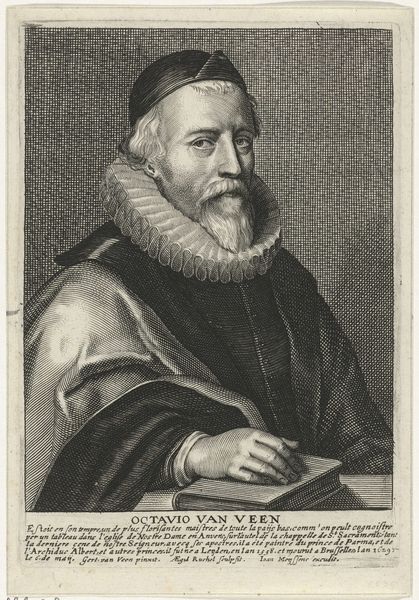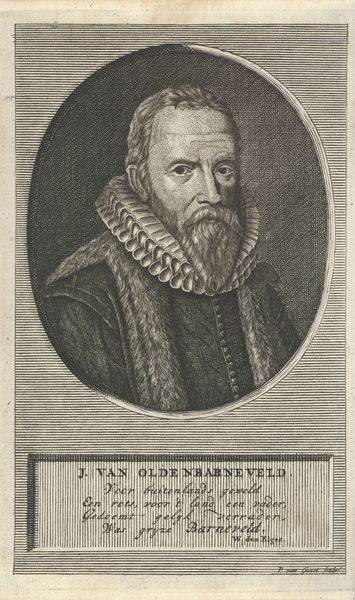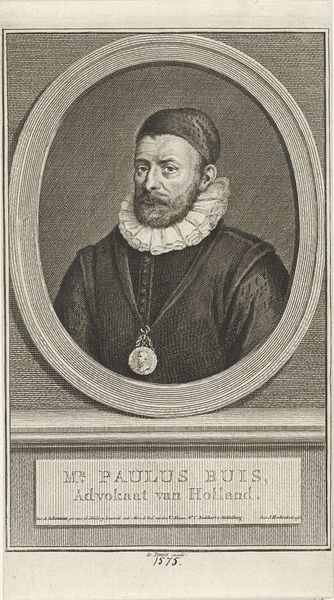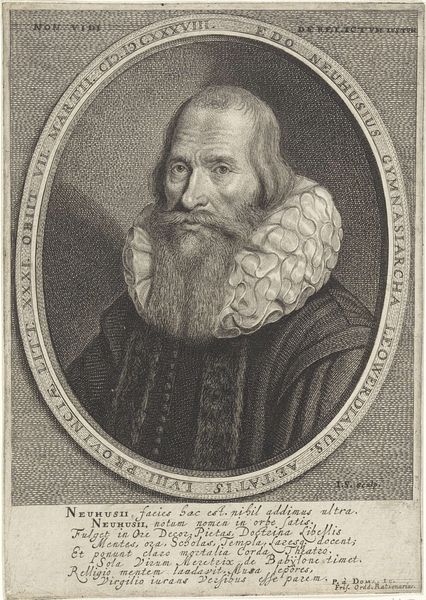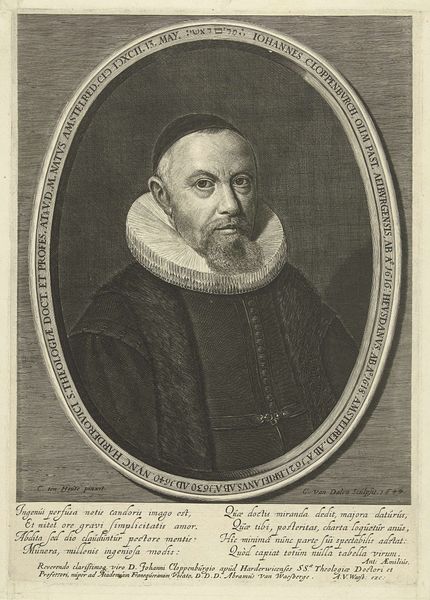
print, engraving
#
portrait
#
baroque
# print
#
engraving
Dimensions: height 141 mm, width 93 mm
Copyright: Rijks Museum: Open Domain
Curator: Looking at this engraving, what's your immediate impression? Editor: Stark, authoritative. The sheer density of the lines, the weight of the figure—it's incredibly imposing, especially given that it's just a print. Curator: Indeed. What we're observing is Johann Friedrich Leonard's 1660 rendering of "Portret van Christophorus Löffelholz von Kolberg," a baroque-era portrait done as an engraving. Editor: Löffelholz. I find myself dwelling on that collar, an almost impenetrable frill framing the face. Beyond its fashionable appeal, what cultural meaning might that dense, encircling ruff hold? Curator: In terms of symbolism, it speaks to status and self-containment, separating the man from the world. It draws your gaze to the face but simultaneously declares a boundary, suggesting a person of power, impenetrable in spirit as well as social standing. Editor: I am intrigued by the elaborate heraldic device beneath the portrait—a pictorial announcement of lineage and power that echoes through the generations. Curator: The coat of arms roots him in his family history and land. The tower may imply strength, protection, aspiration, and the other symbols would tie to his lineage and the family values. Editor: But, there is also such rigid formality here, a lack of spontaneous line that somewhat restricts how effectively his spirit seems to be evoked in totality. What feelings are truly communicated through this strict application of line and symbol? Curator: And there, you’ve touched upon the heart of the matter. Baroque portraiture served to project ideal qualities – honor, piety, intellect – preserving and amplifying the subject’s persona for posterity, much like an ancient icon serves as a channel to spiritual grace and connection with tradition. Editor: Leonard, in his application of lines, uses formal portraiture to reflect much more than a face, but the soul of an era. Thank you, it has given me a new appreciation for this piece. Curator: And, in turn, thinking about its connection to art across time has deepened my analysis too.
Comments
No comments
Be the first to comment and join the conversation on the ultimate creative platform.
